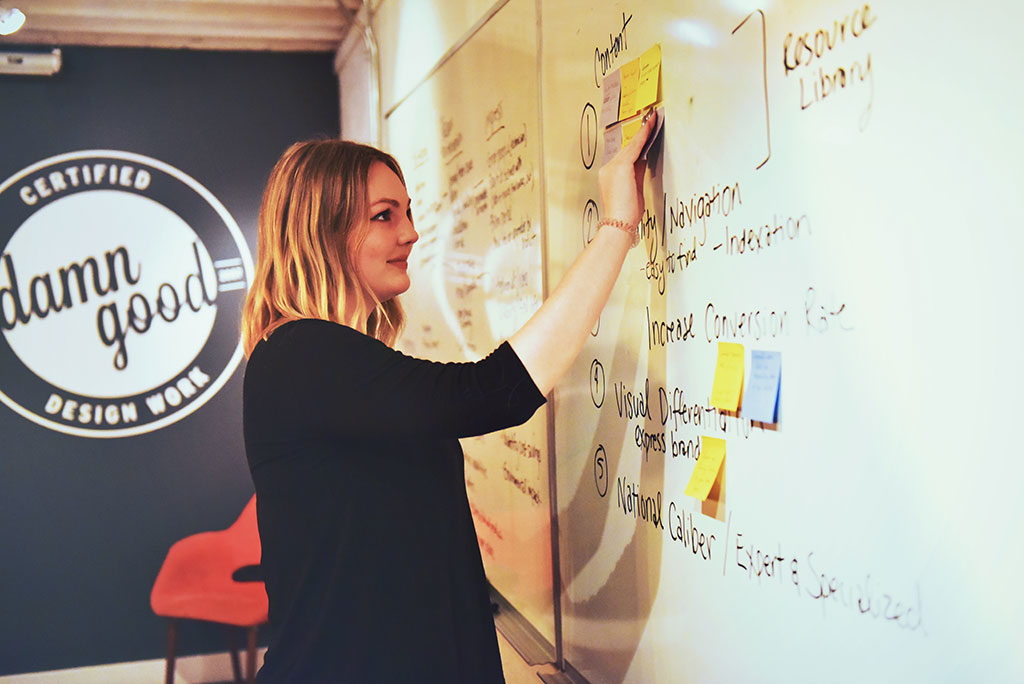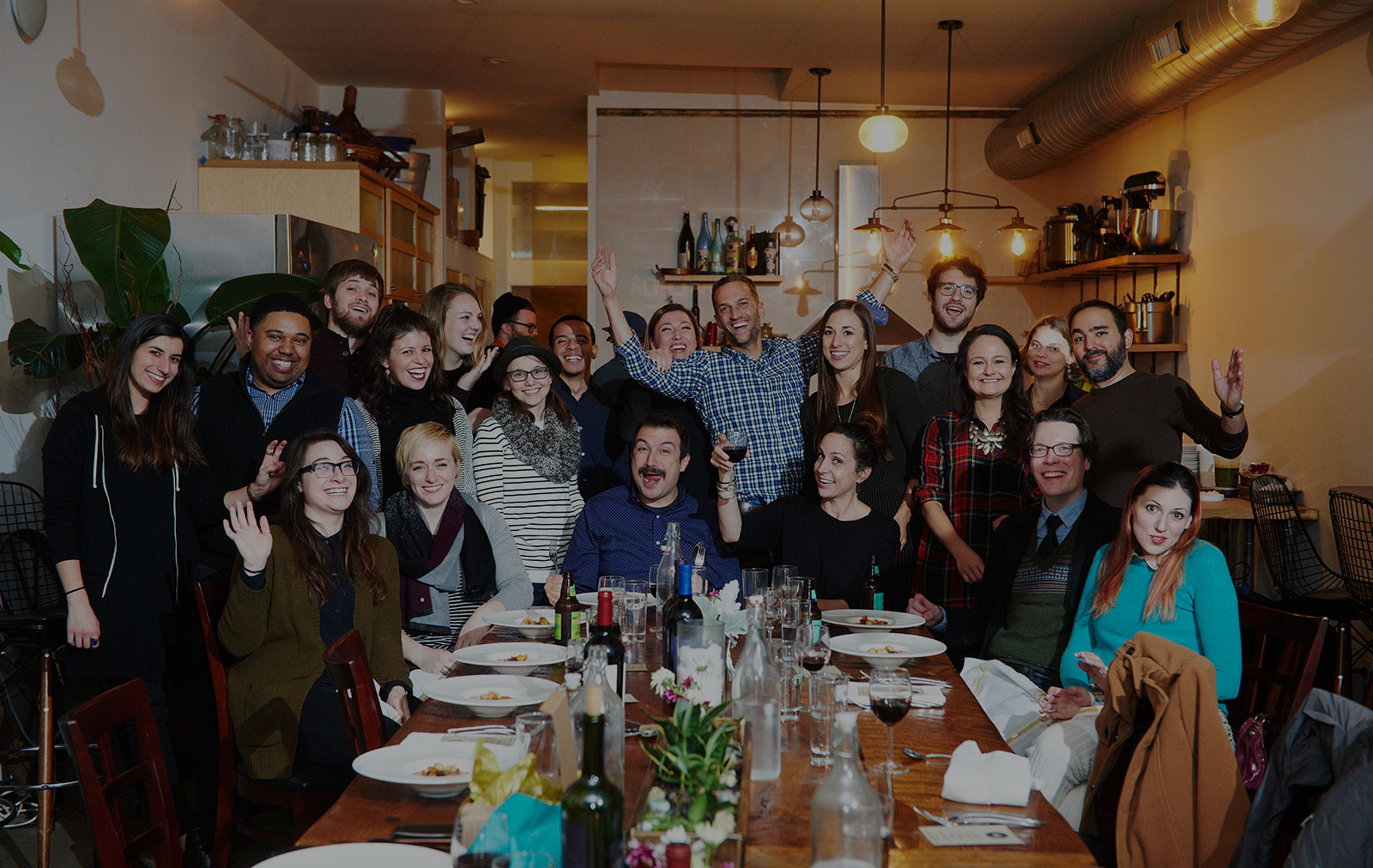January 12, 2018
Strategy Should Inform Scope. Not the Other Way Around.

All successful projects hinge on the development of a strategic approach. So, naturally, a preliminary discovery and strategic planning phase would come first. So why have we always scoped before developing a strategy?
Most agencies have a multi-phase process for executing a wide variety of projects. The phases feed into one another, and what happened in the previous phase informs the requirements of the next. A lot of times, this is how a project goes over budget; new needs that no one had identified arise mid-project and require extra work.
This happens most often on website projects. A website has so many moving parts, and each is so different, that it can be hard to predict how things will develop (no pun intended). By taking a Strategy First approach (performing our Discovery phase to determine the project scope) we can get a clearer picture of what’s to come once we start designing and building a new site.
The Old Way
Historically, when a client would consult Push10 about a website project, we’d spend a fair amount of time on the phone and in person discussing their needs in an effort to establish a high-level strategy and begin visualizing a site structure from which to create a scope of work.
With limited contact with the prospective clients, we’d find ourselves devoting significant time to forming a baseline strategy in an attempt to solidify a Scope of Work and nail down both timeline and pricing. Often, we’d find ourselves guessing at the budget, overall scope, features, functionality, and/or timeline. More often than not, these guesses proved to be inaccurate.
Shortly after celebrating a new client relationship, we’d schedule the project kickoff workshop. Inevitably, there would be some new parties sitting at the table – sometimes even executive-level parties. By the end of the kickoff, a whole host of new ideas and client requests would emerge. This is perfectly normal and to be expected in the brainstormy, collaborative setting of that type of workshop.
But sometimes it made the previously agreed upon scope of work irrelevant. The schedule might change, the required hours might change, and ultimately, the budget also changed too. Many clients were very cooperative in this part of the process, however others would bristle at the thought of their project not only taking longer than originally promised, but costing MORE to boot!
While this certainly does not equate to an automatic derailment of a project or a soured client relationship, it is a thistly briar patch to get through before head-down work can begin. And sometimes, the scope would continue to evolve and morph throughout the life of the project, or assumptions made at the beginning of a project may many weeks later prove to be major obstacles. All too often, we’d simply work through it, finding ways to squeeze in features and timeline requests, and eating costs all along the way. Obviously, re-scoping after the kickoff and throughout the project was not ideal.
We realized there had to be a better way.

The Solution? Strategy First.
Today, in our efforts to avoid some of the pitfalls of inaccurate project scoping, we’ve adopted a Strategy First pricing approach. In short, we provide prospective clients with a fixed price for the strategic discovery phases, as well as a ballpark range for execution phases (design, development, launch, and maintenance).
This approach is NOT paid discovery, which most clients shy away from, for good reason. Rather, at the end of the initial SOW, clients will receive some or all of the following deliverables:
- Kickoff Workshop
- Stakeholder Interviews
- User Personas
- Content Audit
- Content Strategy
- Visual/Creative Brief
- Site Architecture (Site Map)
- Clickable Prototypes (Wireframes)
- Accurate SOW with fees and timeline for execution
While we know that some peer agencies have dabbled in this to varying degrees, it has been a bit of an epiphany for us, and is seemingly solving all sorts of issues we’ve had. Below is a brief list of some of the benefits of this new approach.
First of all, for our clients:
- It shows them that we aim to be thoughtful rather than hasty – a true partner that collaborates with them to uncover the best solutions for their needs.
- It gives them a more palatable price to digest. As Discovery is but a portion of the entire project, and so the associated cost appears immediately feasible.
- It allows us to get started right away, without spending another two to six weeks of back and forth refining a scope based on assumptions that will undoubtedly change anyway.
- It enables clients to be involved in the scoping process and to steer the SOW to meet their pre-determined budget and timeline
And for us:
- It remarkably shortens the time needed to compose a proposal. All of our proposals are custom documents for each client, however it previously took twice as many conversations in regard to sitemap, functionality, etc to visualize a reasonable scope and price accordingly. Now, we are primarily focused on the needs of the Strategic Discovery phase only.
- It allows us the opportunity to build trust and a sense of partnership with a client, freeing us a bit more in the discovery without the constraints of an absolute budget looming in the background.
- And finally (saving the best for last) it removes the risk of late-game surprises. Unforeseen hiccups do more than just pause a project, they disrupt it. Momentum is lost, stress levels increase, and a lot of tap dancing is needed to solve a problem or scope an addition. This helps us minimize the odds of that happening and focus on doing great work.
In Conclusion
So there you have it! It’s what the great ancient thinkers called a ‘Win-Win’. By working through and nailing down the scope as much as possible in a stand-alone Discovery, we increase our chances dramatically of coming in ahead of schedule and under budget. Our entire team is excited about our implementation of this approach, and the increased transparency has indeed begun to show dividends in the smoothness of projects and the relationships with our clients.

